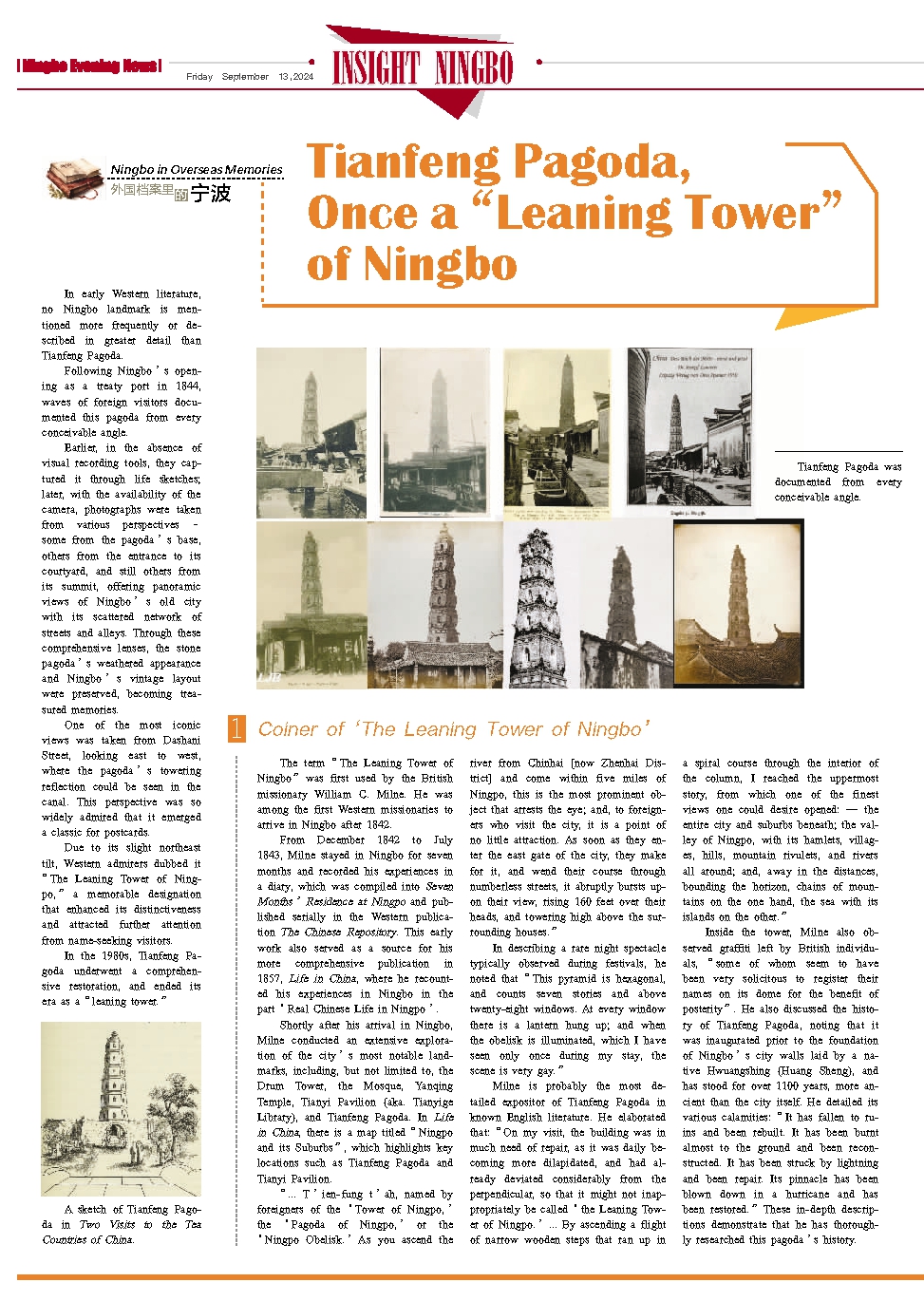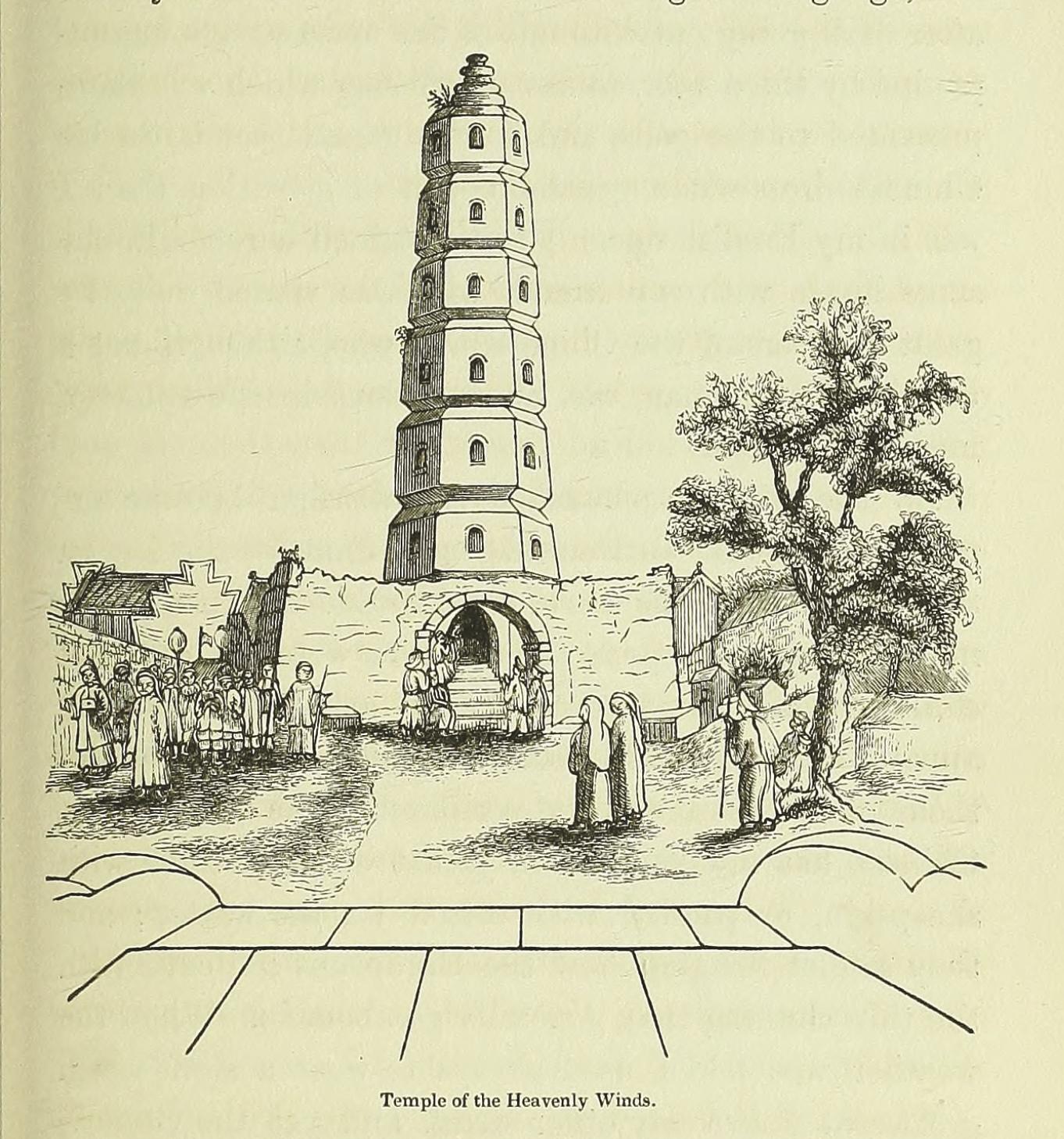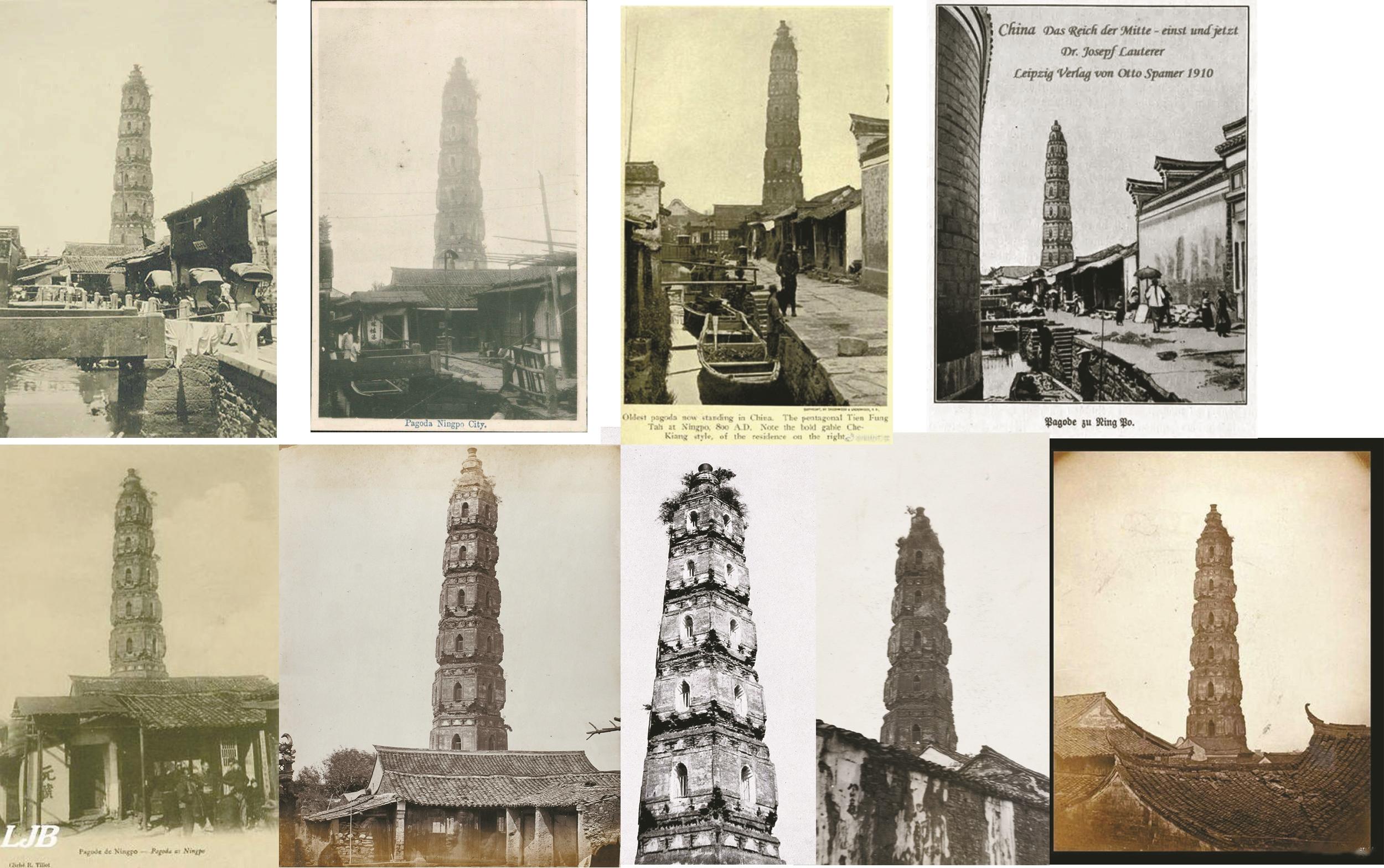In early Western literature, no Ningbo landmark is mentioned more frequently or described in greater detail than Tianfeng Pagoda.
Following Ningbo’s opening as a treaty port in 1844, waves of foreign visitors documented this pagoda from every conceivable angle.
Earlier, in the absence of visual recording tools, they captured it through life sketches; later, with the availability of the camera, photographs were taken from various perspectives–some from the pagoda’s base, others from the entrance to its courtyard, and still others from its summit, offering panoramic views of Ningbo’s old city with its scattered network of streets and alleys. Through these comprehensive lenses, the stone pagoda’s weathered appearance and Ningbo’s vintage layout were preserved, becoming treasured memories.
One of the most iconic views was taken from Dashani Street, looking east to west, where the pagoda’s towering reflection could be seen in the canal. This perspective was so widely admired that it emerged a classic for postcards.
Due to its slight northeast tilt, Western admirers dubbed it “The Leaning Tower of Ningpo,” a memorable designation that enhanced its distinctiveness and attracted further attention from name-seeking visitors.
In the 1980s, Tianfeng Pagoda underwent a comprehensive restoration, and ended its era as a “leaning tower.”
Coiner of ‘The Leaning Tower of Ningbo’
The term “The Leaning Tower of Ningbo” was first used by the British missionary William C. Milne. He was among the first Western missionaries to arrive in Ningbo after 1842.
From December 1842 to July 1843, Milne stayed in Ningbo for seven months and recorded his experiences in a diary, which was compiled into Seven Months’ Residence at Ningpo and published serially in the Western publication The Chinese Repository. This early work also served as a source for his more comprehensive publication in 1857, Life in China, where he recounted his experiences in Ningbo in the part ‘Real Chinese Life in Ningpo’.
Shortly after his arrival in Ningbo, Milne conducted an extensive exploration of the city’s most notable landmarks, including, but not limited to, the Drum Tower, the Mosque, Yanqing Temple, Tianyi Pavilion (aka. Tianyige Library), and Tianfeng Pagoda. In Life in China, there is a map titled “Ningpo and its Suburbs”, which highlights key locations such as Tianfeng Pagoda and Tianyi Pavilion.
“... T’ien-fung t’ah, named by foreigners of the ‘Tower of Ningpo,’ the ‘Pagoda of Ningpo,’ or the ‘Ningpo Obelisk.’ As you ascend the river from Chinhai [now Zhenhai District] and come within five miles of Ningpo, this is the most prominent object that arrests the eye; and, to foreigners who visit the city, it is a point of no little attraction. As soon as they enter the east gate of the city, they make for it, and wend their course through numberless streets, it abruptly bursts upon their view, rising 160 feet over their heads, and towering high above the surrounding houses.”
In describing a rare night spectacle typically observed during festivals, he noted that “This pyramid is hexagonal, and counts seven stories and above twenty-eight windows. At every window there is a lantern hung up; and when the obelisk is illuminated, which I have seen only once during my stay, the scene is very gay.”
Milne is probably the most detailed expositor of Tianfeng Pagoda in known English literature. He elaborated that: “On my visit, the building was in much need of repair, as it was daily becoming more dilapidated, and had already deviated considerably from the perpendicular, so that it might not inappropriately be called ‘the Leaning Tower of Ningpo.’ ... By ascending a flight of narrow wooden steps that ran up in a spiral course through the interior of the column, I reached the uppermost story, from which one of the finest views one could desire opened: — the entire city and suburbs beneath; the valley of Ningpo, with its hamlets, villages, hills, mountain rivulets, and rivers all around; and, away in the distances, bounding the horizon, chains of mountains on the one hand, the sea with its islands on the other.”
Inside the tower, Milne also observed graffiti left by British individuals, “some of whom seem to have been very solicitous to register their names on its dome for the benefit of posterity”. He also discussed the history of Tianfeng Pagoda, noting that it was inaugurated prior to the foundation of Ningbo’s city walls laid by a native Hwuangshing (Huang Sheng), and has stood for over 1100 years, more ancient than the city itself. He detailed its various calamities: “It has fallen to ruins and been rebuilt. It has been burnt almost to the ground and been reconstructed. It has been struck by lightning and been repair. Its pinnacle has been blown down in a hurricane and has been restored.” These in-depth descriptions demonstrate that he has thoroughly researched this pagoda’s history.




